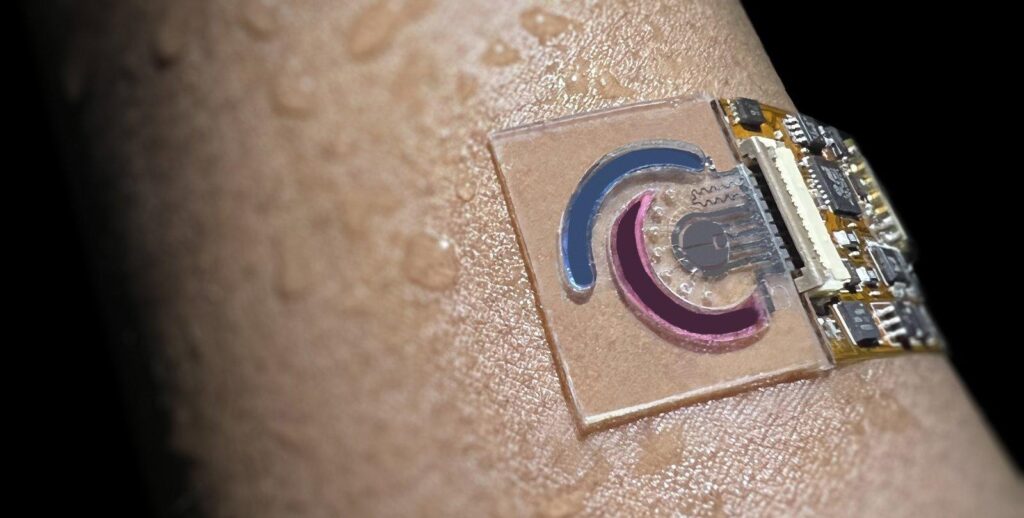How Sweat and Breathing Sensors Are Signaling a New Era of Marginal Gains
In the relentless pursuit of athletic excellence, every fraction of a second and every ounce of effort counts. Enter sweat and breathing sensors-innovative technologies that are revolutionizing how athletes and coaches approach performance optimization. By providing real-time insights into hydration levels, electrolyte balance, and respiratory efficiency, these tools are enabling a new level of precision in training and competition. As wearable technology continues to evolve, the integration of these sensors marks a significant shift in sports science, revealing not just the physical capabilities of athletes, but also the intricate biochemical signals that govern their performance. In this article, we explore how these groundbreaking devices are ushering in an era where marginal gains can make the difference between gold and silver, and what this means for the future of sports at all levels.
Unlocking Performance: The Role of Sweat Sensors in Athlete Monitoring
In the ever-evolving world of sports technology, the integration of sweat sensors is emerging as a game-changer for athlete performance monitoring. These devices, often embedded in wearable technology, provide invaluable insights by analyzing sweat composition, hydration levels, and electrolyte balance. Athletes can gain a deeper understanding of their physiological responses, allowing them to tailor their training regimens and optimize recovery strategies. Furthermore, this data empowers coaches to make informed decisions on when to push athletes and when they might need to ease off, resulting in more personalized training approaches.
Recent studies underscore the significance of these sensors in the quest for marginal gains. By capturing real-time data on various biomarkers, including sodium, potassium, and lactate, sweat sensors can help in identifying potential health issues before they escalate. This proactive monitoring fosters not only enhanced performance but also injury prevention. The future of sports performance will likely hinge on data-driven strategies, with sweat sensors playing a pivotal role. As these technologies advance, their integration into training programs promises to unlock new levels of athletic excellence.
Breathing Dynamics: How Respiratory Tracking Transforms Training Regimes
The integration of respiratory tracking technologies into training regimens represents a leap forward in athlete performance monitoring. By harnessing real-time data from breathing sensors, trainers can decode the nuances of an athlete’s respiratory patterns to optimize their workouts. This innovative approach allows for a more individualized training experience, targeting specific areas for improvement based on an athlete’s unique physiological responses. As these sensors collect vital metrics such as breath rate, oxygen consumption, and ventilation patterns, coaches can refine training intensity and recovery strategies to maximize efficiency and athletic potential.
The implications of breathing dynamics extend beyond merely enhancing performance; they also play a critical role in injury prevention and overall health management. For instance, by identifying irregular breathing patterns that may signify fatigue or stress, athletes can adjust their routines promptly, avoiding the pitfalls of overtraining. Furthermore, the analysis of respiratory metrics during competitions can provide insights into an athlete’s state of readiness. Essential metrics to consider include:
| Metric | Significance |
|---|---|
| Breath Rate | Indicates effort level and fatigue |
| Oxygen Saturation | Evaluates endurance capabilities |
| Ventilation Volume | Helps tailor breathing exercises |
Integrating Technology: Practical Recommendations for Coaches and Athletes
As athletes strive for peak performance, the integration of sweat and breathing sensors is revolutionizing training methodologies and enabling a more personalized approach to fitness. These wearable technologies provide real-time data on hydration levels, electrolyte balance, and respiratory efficiency, allowing coaches and athletes to make informed decisions. With the insights offered by these sensors, coaches can identify individual needs and adjust training loads accordingly, leading to optimal performance and recovery. The data can be used to modify nutrition plans, ensuring athletes stay hydrated and well-fueled based on their unique biological responses.
The adoption of this technology signals a shift towards a data-driven culture in sports, where marginal gains become increasingly attainable. Athletes are no longer just training harder; they are training smarter by leveraging insights gained from their bodies. This approach not only enhances performance but also minimizes the risk of injury through targeted recovery strategies. As the landscape of sports science evolves, embracing these innovations is paramount for athletes and coaches aiming for excellence. Collaborating with tech developers to streamline data interpretation will be essential in harnessing the full potential of these advancements.
To Wrap It Up
As we stand on the brink of a technological revolution in sports and health, the integration of sweat and breathing sensors marks a watershed moment in the pursuit of marginal gains. By harnessing real-time biometric data, athletes are not only optimizing their performance but also redefining the limits of human potential. These innovations promise to enhance training regimens, boost recovery, and tailor nutrition plans like never before, ensuring that every drop of sweat and every breath taken brings them closer to their goals.
As we continue to explore the transformative effects of these advanced sensing technologies, the implications stretch beyond the confines of athletics, offering insights into broader health monitoring and chronic disease management. As we embrace this new era, it becomes evident that the quest for excellence is no longer solely reliant on physical prowess, but rather on the precision of data-driven strategies.
In this landscape of continuous improvement, the synergy between human effort and technological advancement paves the way for a future where every athlete can maximize their potential while simultaneously pushing the boundaries of what is possible. As researchers, engineers, and athletes collaborate to refine these tools, the world will undoubtedly witness a fundamental shift in how we perceive performance, health, and well-being. The journey has only just begun, but the signs are clear: the era of marginal gains is here, and it’s driven by the science of sweat and breath.











